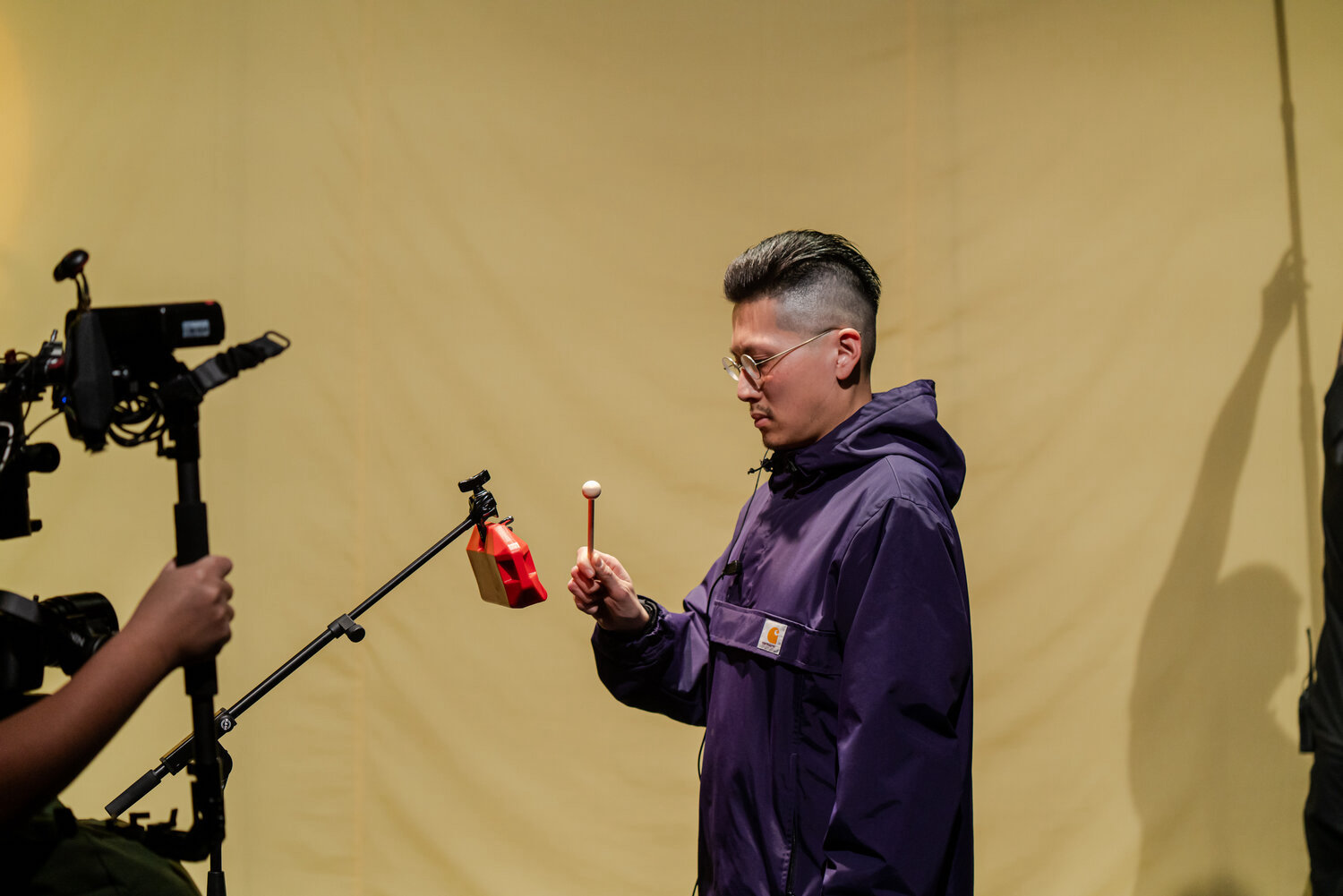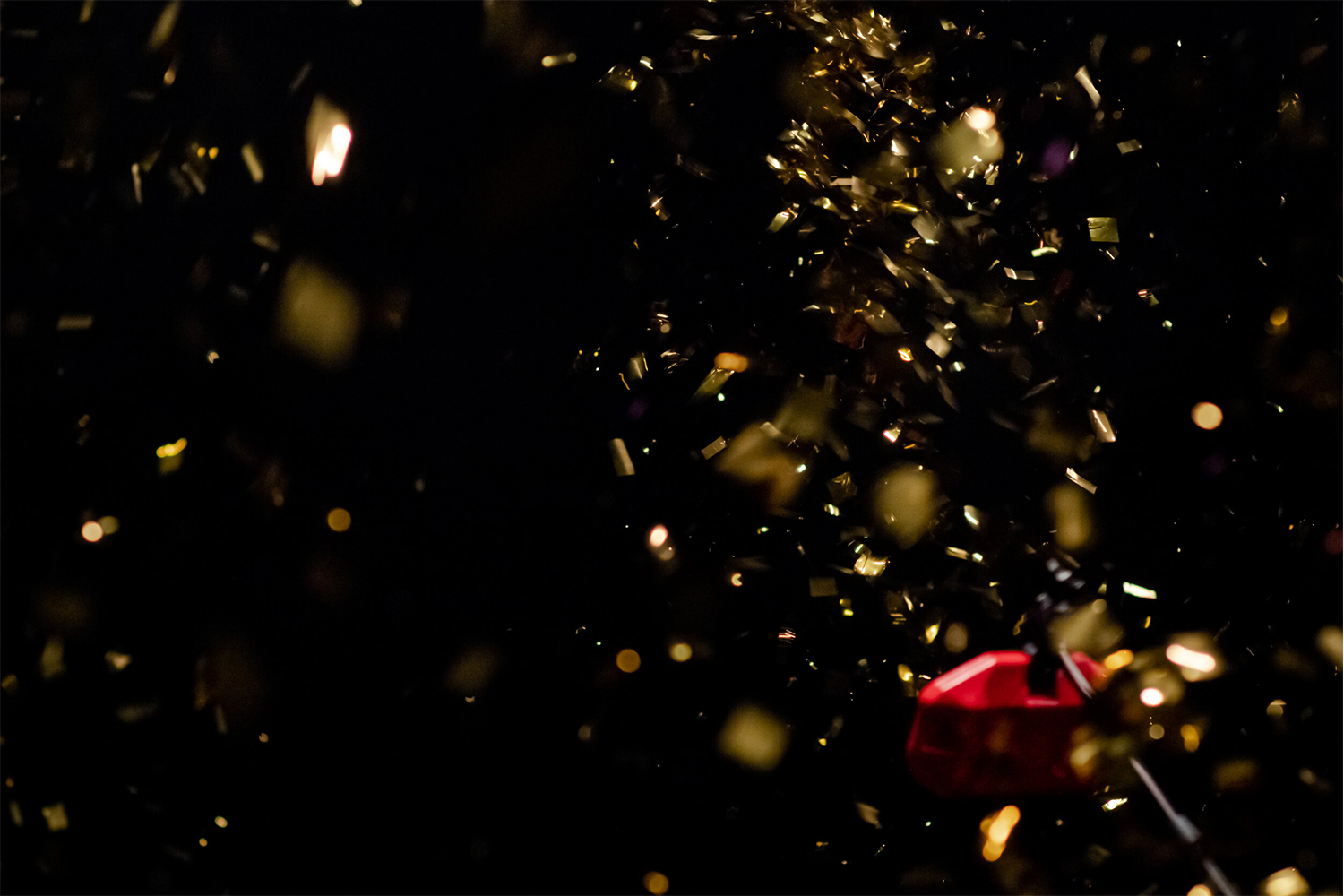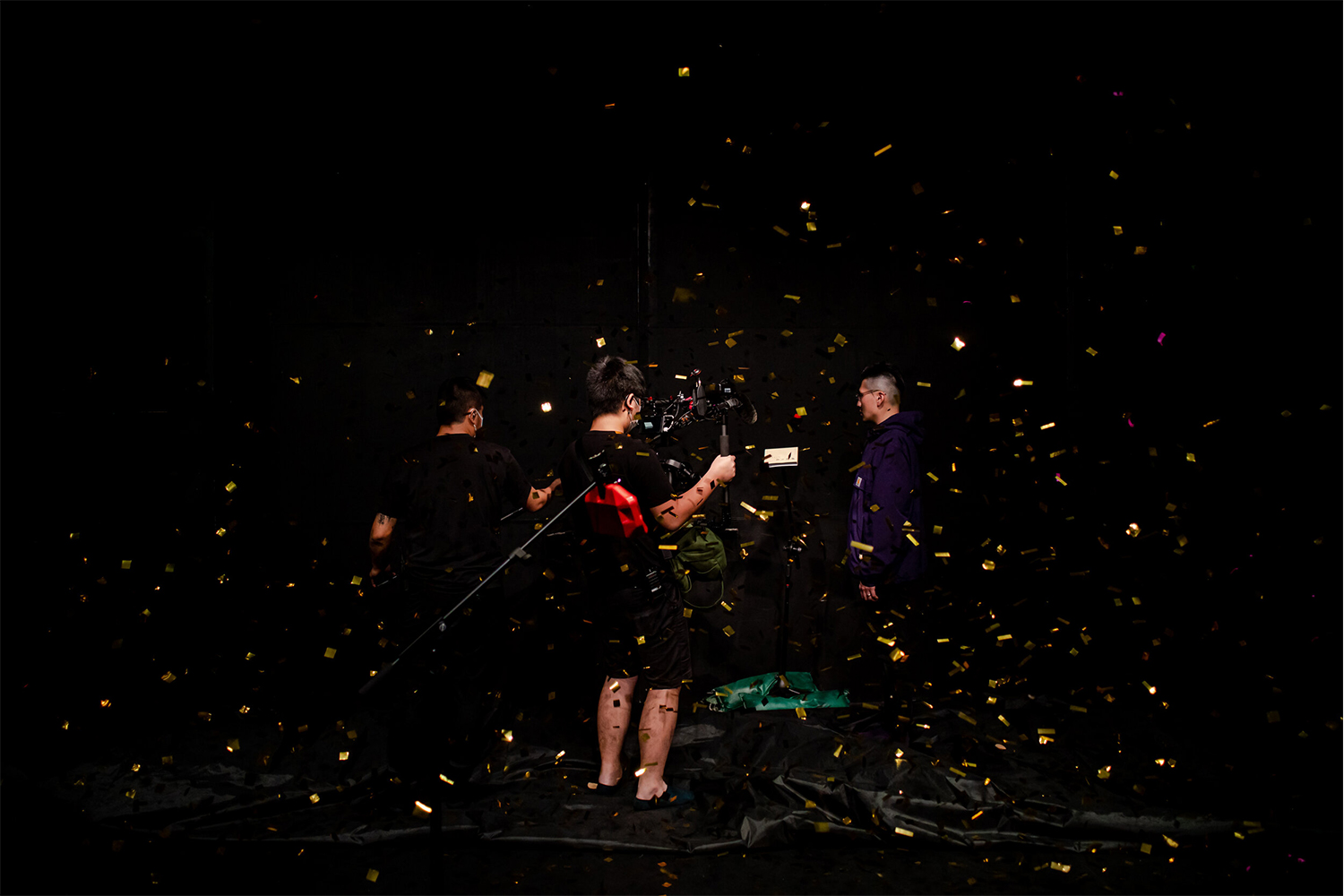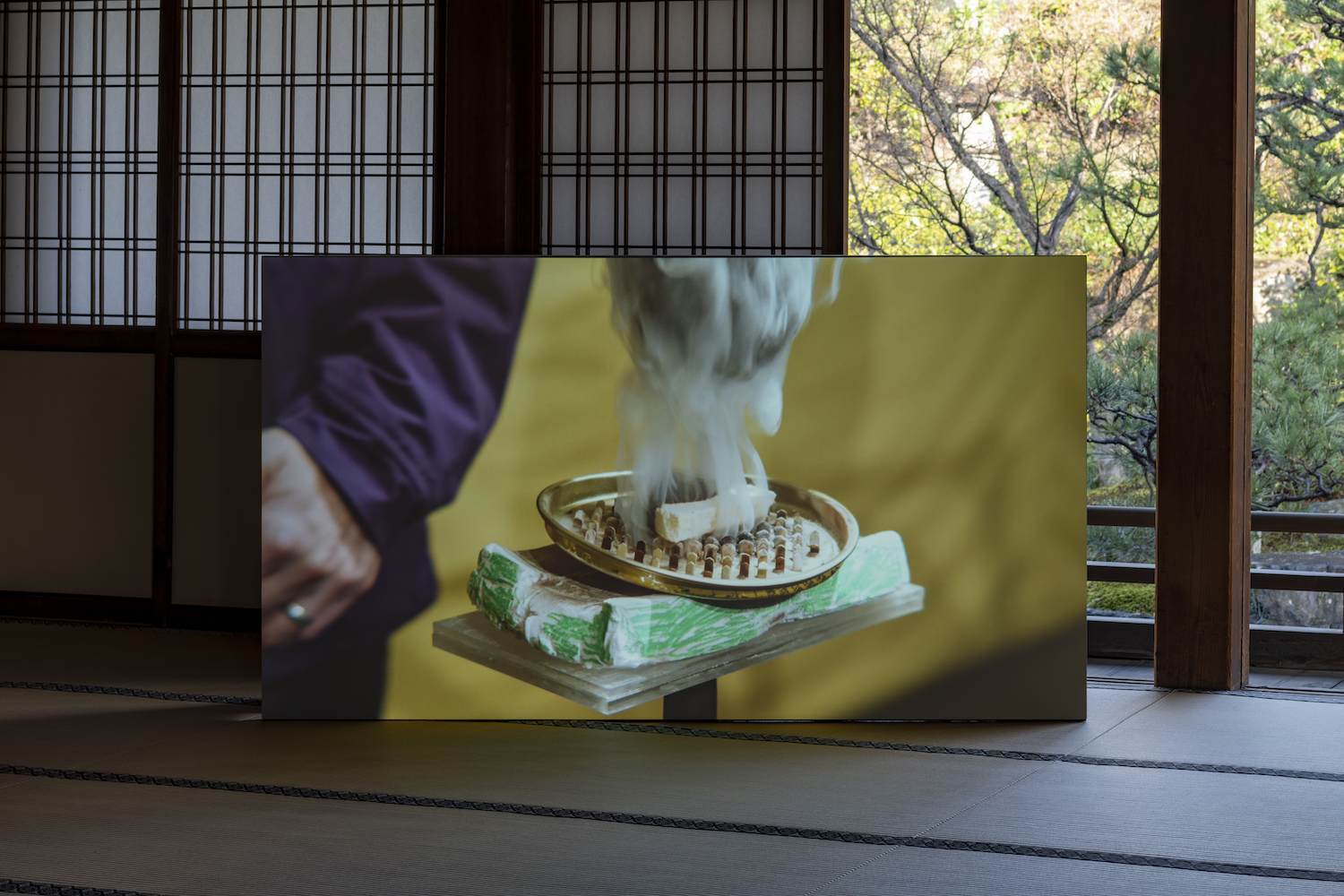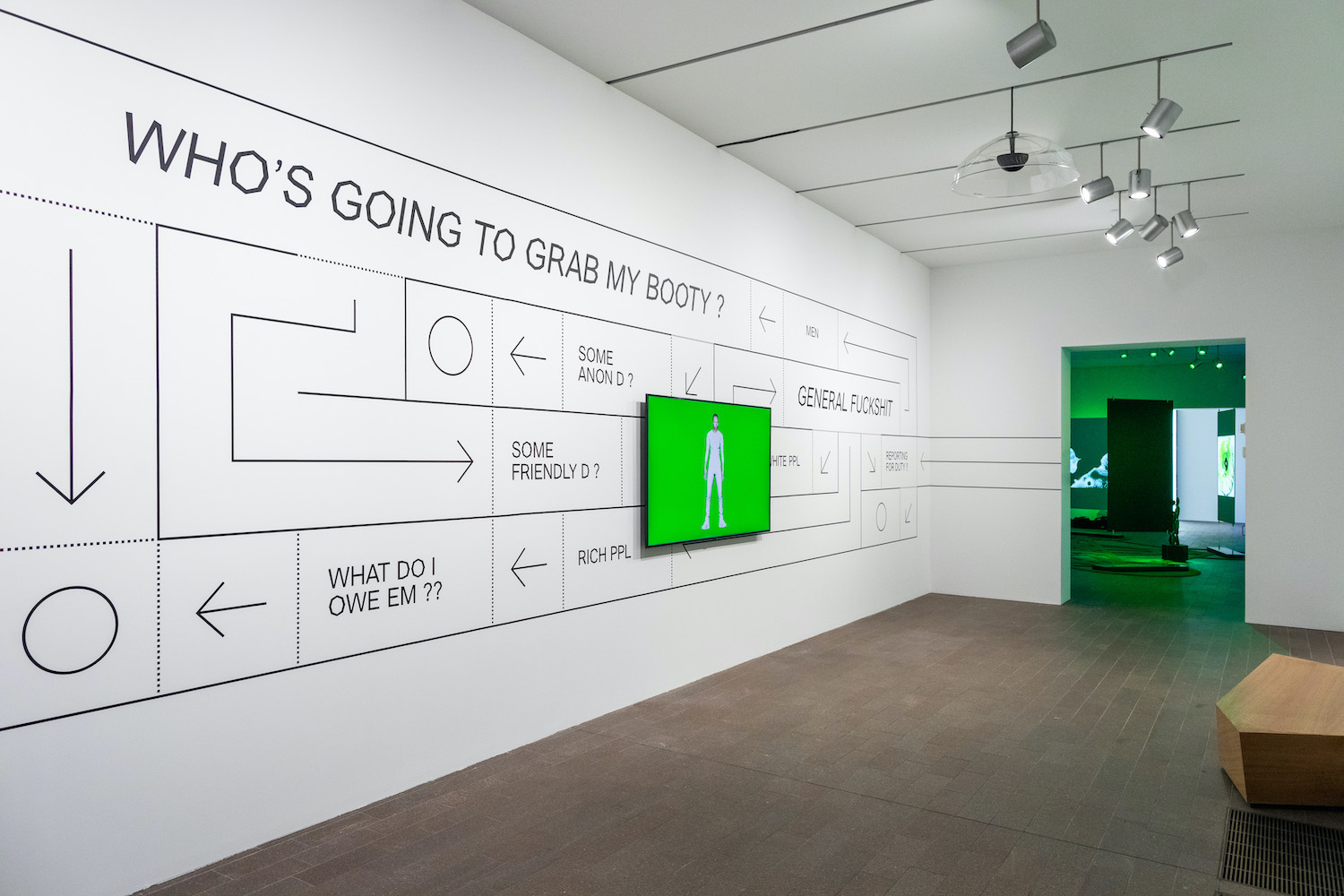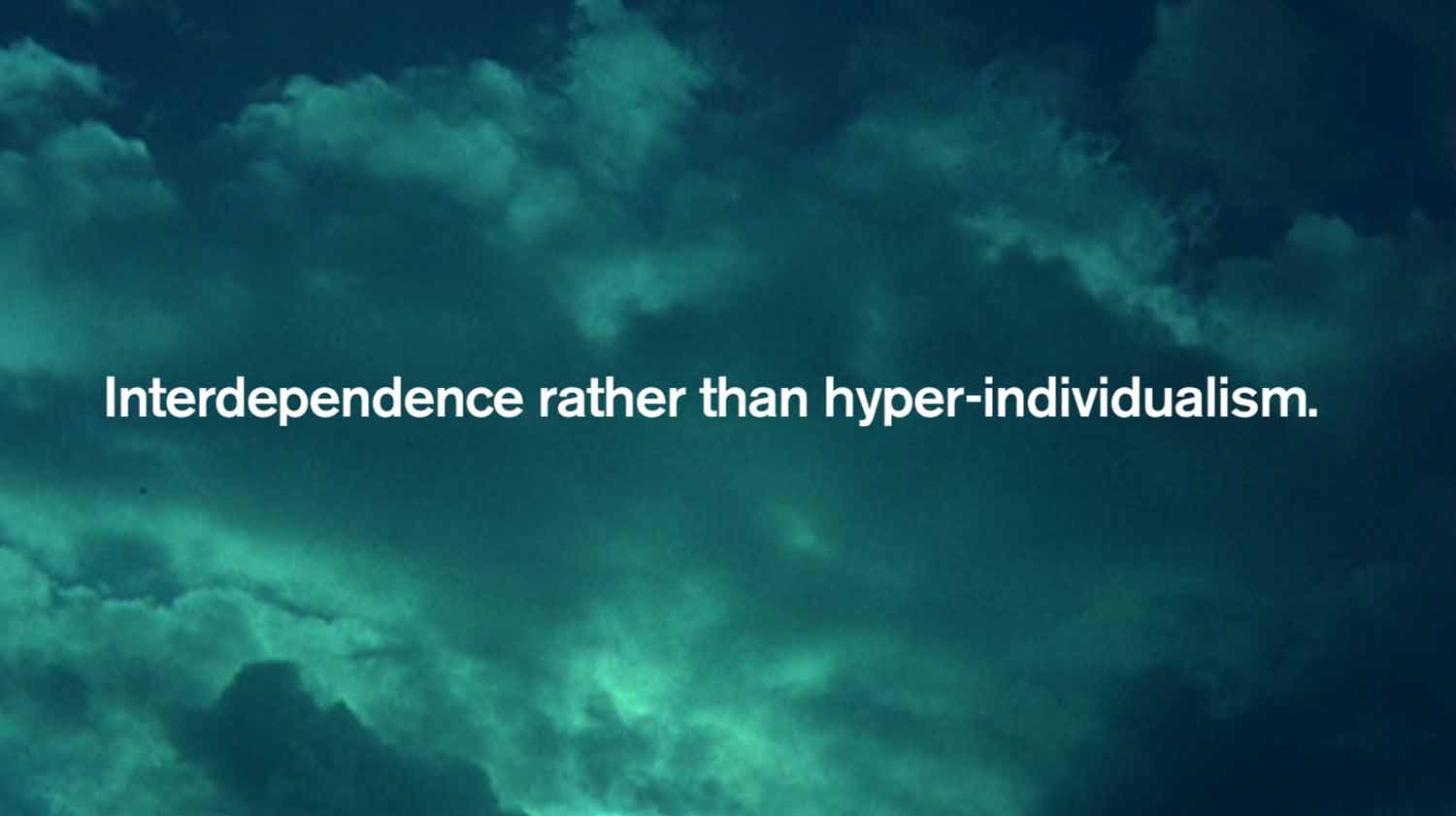“Listening In” is a column dedicated to sound, music, and listening practices in contemporary art and its spaces. This section focuses on how listening practices are being investigated and reconfigured by artists working across disciplines in the twenty-second century. This year the column is curated by Barbara London and explores how artists continue to investigate sound by incorporating up-to-the-minute software and electronic apparatuses to their practice. The best sound artwork takes its audience on an inspiring journey, one that offers fresh insight into what it means to be in the world, construing something animate and distinct by means of inorganic tools. It is through the tension between the haptic and the neutral that artists and observers discover new experiences.
Categorization, as a kind of epistemological tool, needs to be continuously challenged and reformed, and the best way to do that is by creating new categories. Sound art emerged and became one of the trajectories of conceptual art, and possibly the most esoteric and interesting one, particularly in how it challenged vision as the dominant mode of perceiving the world. Max Neuhaus first called one of his works a “sound sculpture” in the early 1970s, while Barbara London named an exhibition she was curating at MoMA “Sound Art” in 1979. We can only image how exhilarating those moments must have been.
When the term “sound art” was first conceived, many important historical works, such as John Cage’s 4’33’’ (1952) and Luigi Russolo’s Intonarumori (1913) noise machines, gained new relevance — as did works hidden deeper in art history. Yao Da-juin has insightfully discussed how Calmly Listening to the Wind Blowing through the Pines, a famous Chinese scroll from the Southern Song Dynasty, may be seen differently once we see it from the perspective of sound art. That sound art existed in thirteenth-century China is the kind of lovely thought that intellectual productivity in a new category may provide.
The category of sound art is still often utilized in curatorial and critical discourse. It may be because sound is generally considered to be an inadequate field of knowledge, hence it took longer for artists to artistically experiment with sound before it became common parlance. So far, any practice that uses sound as a medium or subject can be referred to as sound art, but there are approaches that are particularly accepted. They are works that visualize and materialize sound to create abstract images and forms, as well as performances and installations that try to reveal or mimic how sound is created, or, in other words, how sound is actualized. It is understandable why these works are welcomed by the market and institutions, as they are easy to handle. But should we not see a certain sadness or irony in these works if we consider the initial intent behind the creation of this category some fifty years ago? Still, only when it can be seen does sound matter.
In contrast, consider the legend of Pythagoras, who insisted on giving lectures behind a curtain so that his students could concentrate on his speech without being distracted by his image. To romanticize it further, we might assume that the great philosopher, mathematician, and music theorist believed that there is knowledge that can only be conveyed by sonic and not visual information, and that one must become dedicated to sound in order to acquire this knowledge. Shouldn’t this standard apply to sound art?
In many ways, Samson Young is the ideal sound artist — he is a composer with a PhD in music from Princeton. I asked Samson if he was bothered by being defined by the label “sound artist,” which is frequently applied to him. He replied understatedly: “Some of my works are not about sound.” But when I looked at those works, I found that they were surely about sound — or, at the very least, they could be understood from the perspective of sound art. In fact, his non-musical practices always begin with a keen sensitivity to sound and invite us to perceive sounds that are typically not heard.
When he is not a working as a composer, Samson enjoys taking on the personas of different characters who work with sound, including field recordist, historian of sound, singer, sound effects expert, radio host, and so on. Sound fluctuates between conflicting natures as his character shifts — from noise to song, from splendor to cheapness, from history to fiction, from catastrophe to hypocrisy. One of his work’s most exciting features is the way it reveals the numerous dimensions of sound.
Still, his works, while involving complex techniques, are not encumbered by jargon. With thoughtfulness and care, sound is elevated to represent issues that are more fundamental. In one of his most recent works, Sonata for Smoke (2021), created in response to his time as artist-in-residence at Kyoto’s Ryosoku-in Temple, Samson’s relationship with sound is symbolically glorified as that of a Zen master.
In the beginning, the protagonist in the video, played by Samson himself, ignites a slice of smoke cake (a chemical product that produces smoke for theatrical effects). A boom microphone captures the sound of the cake burning, while emitting a slim but dense column of smoke. When the burning ends, a yellow curtain falls abruptly, and the protagonist claps his hands. Visible now is a second room of a comparable size with a matching yellow curtain in the back. Here, a percussion device called a jam block is attached to a microphone stand. On the curtain, a light with the appearance of a full moon is projected. The protagonist prepares to hit the jam block, but he seems to be waiting for the right moment, which is reminiscent of how a monk hits a muyu, a kind of wooden bell that serves to maintain rhythm during Buddhist chants. This time in the video, a different microphone stand is shown holding a slipcase from the book Anthology of Passages from the Forests of Zen, a classic of Japanese Zen literature. However, there is no book inside the case. The protagonist makes a curious sound by scratching the cover with his fingertips. When he suddenly hits the slipcase, golden-colored papers unexpectedly erupt from all sides of the frame.
The door at the back of the room opens and another yellow curtain drops down. This fourth room has the most dreamlike setup — there is a fancy car with its headlights on, the word “OKAY” on its license plate, as smoke fills the car’s interior. A female pianist plays a piano situated next to the car, her back facing the camera. The protagonist approaches the car and peers inside. Smoke is pouring out from the car’s windows; then a dull, resounding sound can be heard. The pianist appears to be playing the piano, but there is only a faint sound, while the protagonist opens the car door slowly and then quickly shuts it. Next, the view is from inside the car, as the protagonist is seated in the driver’s seat. Heavy rain pours down the windshield, creating a familiar rhythm; eventually the rain stops.
The video shifts to outdoors. Near the shore of a lake, a boat made of paper is being burned as a kind of sacrifice. In East Asian cultures, burning paper boats like this one is considered a sacred ritual, because it represents the union of the material and spiritual worlds. The protagonist uses a boom microphone to record the sound of the fire, while he stands submerged up to his waist in the lake. Ever so slowly, the paper boat turns to ashes, leaving the thin skeleton of its metal frame. In the brief closing scene, a close-up of a pair of hands can be seen pounding a nail held in the air.
Samson Young’s works are all quite different from each other. And rarely are they as self-reflexive as Sonata for Smoke, which is a kind of koan, a paradoxical riddle. In the video, sound takes us on a journey in pursuit of insight into our consciousness. The work has motifs that are common to Zen literature, such as the smoke, the fire, the full moon, the river, and the hammer. However, what points to the true beauty of Zen are the things that are unusually Zen and come from Samson Young’s toolbox: the boom mic, the mic stand, the camera, the jam block, the piano. Perhaps most beautiful of all is the Carhartt that this Zen master of sound wears.


